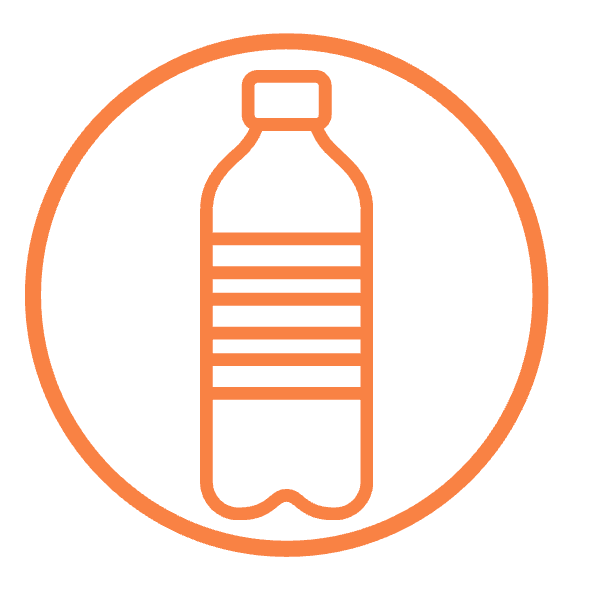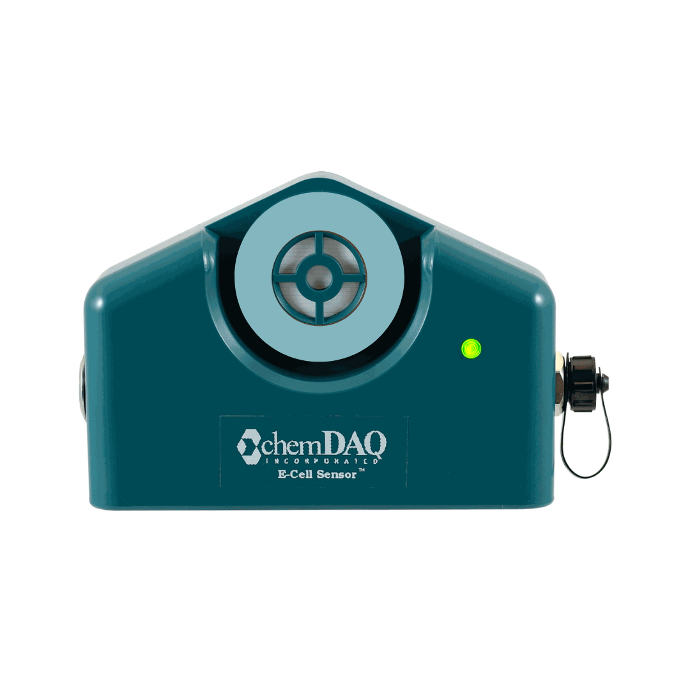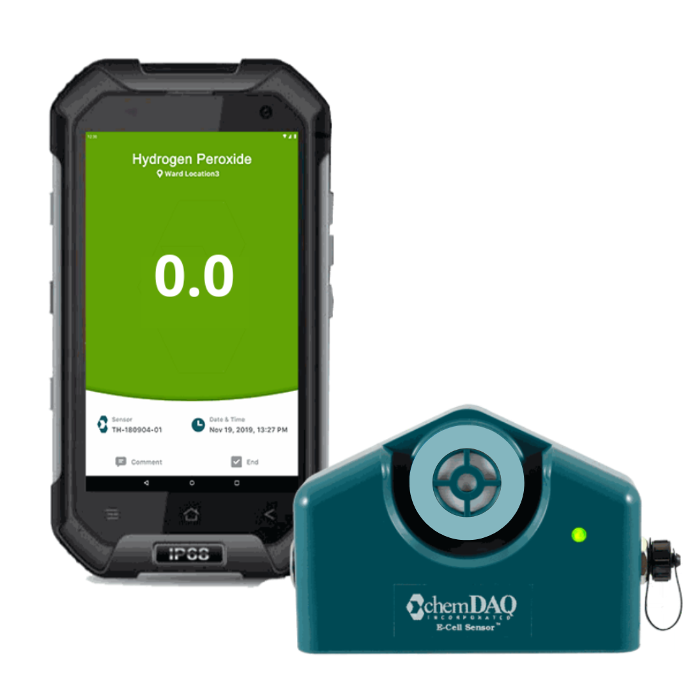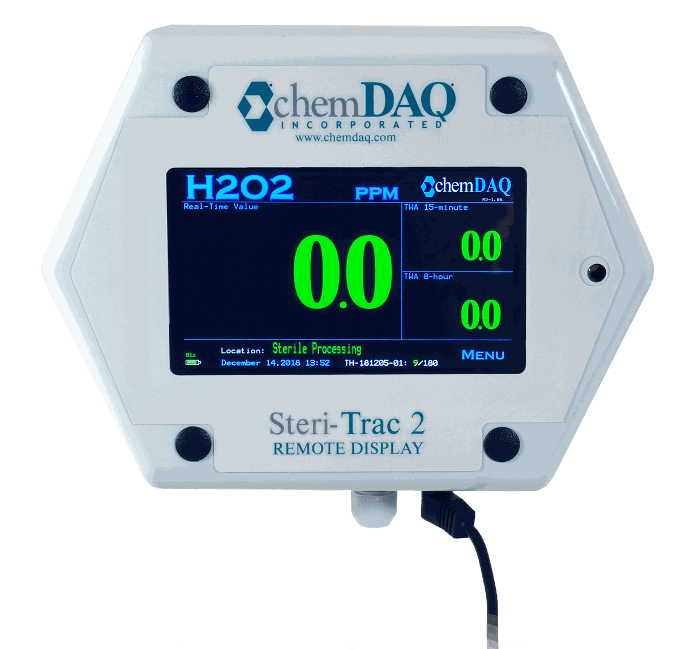Leading Brands Choose ChemDAQ
Applications
Hospitals rely on H2O2 , PAA, and EtO to sterilize medical instruments needed in patient care–-from endoscopes to surgical equipment. These gases are often used to sterilize instruments that are sensitive to the heat or moisture found in steam-based sterilizers. The essential sterilization of medical instruments requires workers to employ high concentrations of these gasses in the sterilization machines to ensure their effective use. Such high concentrations can result in hazardous gas vapors escaping the machines, placing sterile processing workers’ health and safety at risk.
Monitoring Solutions
The high concentrations of H2O2, PAA, and EtO used throughout sterile processing departments merits the implementation of a chemical vapor monitoring system to provide real-time vapor readings and alert sterile processing workers if and when their environment becomes unsafe.
E-Cell Sensor
The E-Cell sensor features ChemDAQ’s proprietary Spot-On™ filter technology to reduce interference and precisely measure chemical vapor levels for PAA and H2O2. Unlike other suppliers, ChemDAQ’s sensors are calibrated with PAA and H2O2 test gas to ensure top safety and performance.
SafeCide™ Series
Quickly and easily detect hazardous areas with the SafeCide series, a portable monitoring system to provide real-time measurements of PAA and H2O2 in the department and easily identify hot spots and leaks.
Steri-Trac® Series
ChemDAQ’s Steri-Trac 2 area monitor connects to air handling systems to control both ventilation and air extraction based on H2O2, PAA, and EtO exposure levels. This fixed monitoring system can also be installed near your sterilizers to keep workers safe around-the-clock and alert you if and when hazardous vapor levels occur.
Learn MoreConnect with a Product Expert
Need help determining which monitoring system best fits your needs? We can help!
Leading Hospitals Choose ChemDAQ






Browse the Other Industries We Serve

Food & Beverage Packaging
H2O2 and PAA are used in high concentrations and in large quantities through aseptic packaging operations to ensure the safe production and extended shelf life of common food and beverage products.

Medical Device
More than 50% of all medical devices used in the U.S. are sterilized with EtO. While an effective sterilizing agent, EtO is known to produce harmful gas vapors and off-gas from sterilized units, putting workers at risk of exposure.

Protein Processing
PAA is used in poultry and meat processing. PAA is distributed to various areas of the processing plant to kill harmful bacteria on meat and surfaces to meet USDA food safety guidelines.

Supply Chain Logistics
Medical devices sterilized with EtO are then shipped to their final destination and may continue to off-gas for days. During transport, EtO accumulates in trucks and continues to off-gas once held in storage facilities, accumulating emissions that can often exceed OSHA's permissible exposure limit.



